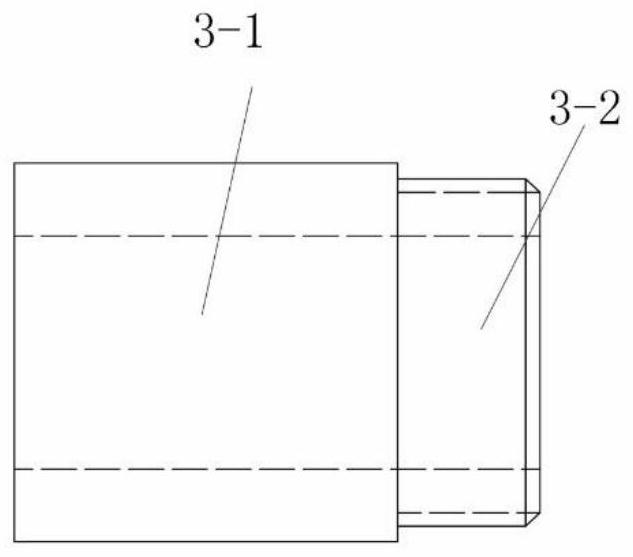A method for protecting the bottom hole of composite material/additive material
A composite material and material technology, applied in the direction of hand-held tools, metal processing, manufacturing tools, etc., can solve problems such as limited operating space, inability to meet equipment use and maintenance requirements, and inability to assemble
- Summary
- Abstract
- Description
- Claims
- Application Information
AI Technical Summary
Problems solved by technology
Method used
Image
Examples
Embodiment 1
[0077] This embodiment provides a method for protecting the base hole of a composite material. The protection method is: install an interference stagnant bushing on the bottom hole of the composite material or additive material, the stagnant bush is a straight bushing 11, and the The specific process of installing the stagnant bushing is: the cold extrusion installation tools selected in the installation process include: combined mandrel, pulling gun and installation of nose cap.
[0078] S1. Make holes on the base material, the base material is: carbon fiber composite material, and the position conditions for making holes that need to be explained are as follows:
[0079] The distance from the right side of the hole to the nearest obstacle is: Forward Clearance
[0080] The distance from the left side of the hole to the nearest obstacle is: Backward Clearance
[0081] The distance from the centerline of the hole to the upper obstacle is: upper clearance
[0082] The distanc...
Embodiment 2
[0099] This embodiment provides a protection method for the base hole of composite material. The protection method is to install an interference retention bushing on the bottom hole of composite material or additive material. The installation process is as follows: Figure 10a As shown, the retention bushing is a flange bushing, and the specific process of installing the retention bushing is as follows:
[0100] The cold extrusion installation tools selected in the installation process include: combined mandrels, pull guns, nose top caps, and end surface pressing components.
[0101] S1. Make holes on the base material, the base material is: carbon fiber composite material, where the position conditions for making holes need to be explained, such as Figure 9 Shown:
[0102] The distance from the right side of the hole to the nearest obstacle is: Forward Clearance
[0103] The distance from the left side of the hole to the nearest obstacle is: Backward Clearance
[0104] Th...
Embodiment 3
[0123] This embodiment provides a method for protecting the base hole of a composite material. The protection method is: installing an interference retention bushing on the bottom hole of the composite material or additive material, such as Figure 12 As shown, the specific process of installing the stagnant bush is as follows: the cold extrusion installation tools selected in the installation process include: combined mandrel, pull gun, and installation of nose cap 3 and telescopic pad 4;
[0124] The cold extrusion installation tools selected in the installation process include: a combined mandrel, a pull gun, and a nose top cap 3 and a telescopic spacer 4 .
[0125] S1. Make two initial holes with coincident centerlines and the same diameter on the base material. The base material is: titanium alloy additive material, and the operating space of the initial holes on the base material is limited. The initial hole at the far end of the operation is defined as The primary hole ...
PUM
 Login to View More
Login to View More Abstract
Description
Claims
Application Information
 Login to View More
Login to View More - R&D
- Intellectual Property
- Life Sciences
- Materials
- Tech Scout
- Unparalleled Data Quality
- Higher Quality Content
- 60% Fewer Hallucinations
Browse by: Latest US Patents, China's latest patents, Technical Efficacy Thesaurus, Application Domain, Technology Topic, Popular Technical Reports.
© 2025 PatSnap. All rights reserved.Legal|Privacy policy|Modern Slavery Act Transparency Statement|Sitemap|About US| Contact US: help@patsnap.com



